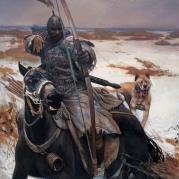Опитомяването на кучето промени историята
-
Последна активност
-
- 32 мнения
- 647 прегледa
-
Генетиката в помощ на историята: сарматският произход на българи и славяни 1 2 3 4 99
От Южняк, in Средновековна история
- 2459 мнения
- 283173 прегледa
-
- 1780 мнения
- 154081 прегледa
-
Руско-украинската война 2022-2024 година. 1 2 3 4 160
От Р. Теодосиев, in Руско-украинската война 2022 година.
- 3982 мнения
- 233021 прегледa
-
- 10 мнения
- 284 прегледa
-
-
Последно разглеждащи 0 Потребители
- No registered users viewing this page.



Препръчано мнение
Напиши мнение
Може да публикувате сега и да се регистрирате по-късно. Ако вече имате акаунт, влезте от ТУК , за да публикувате.